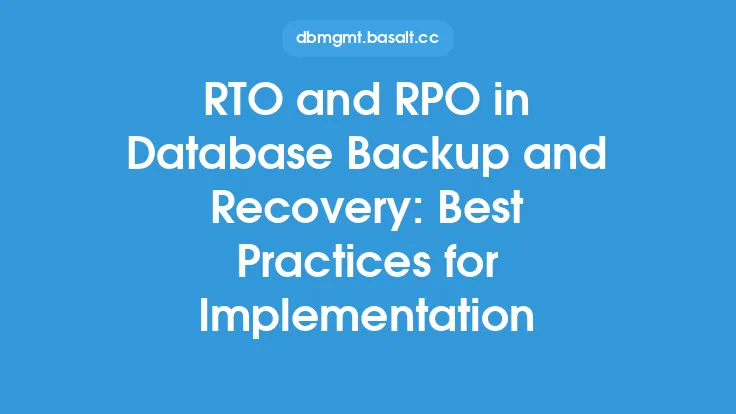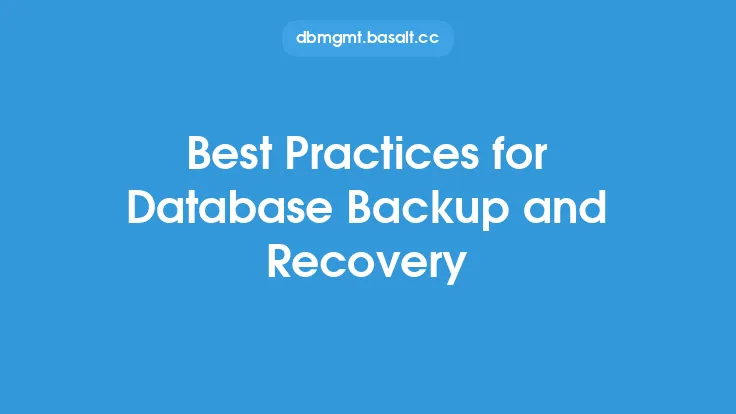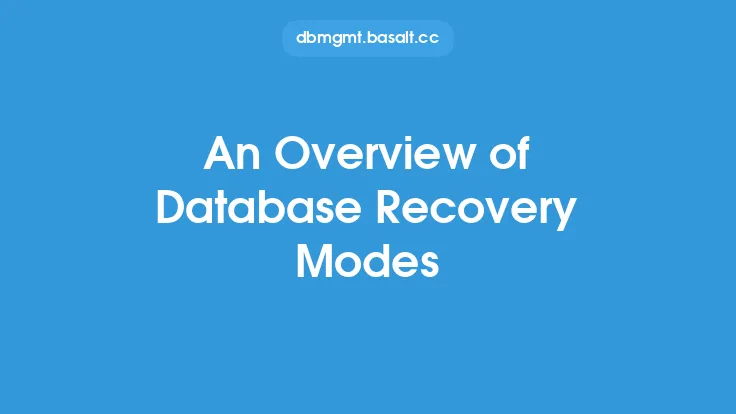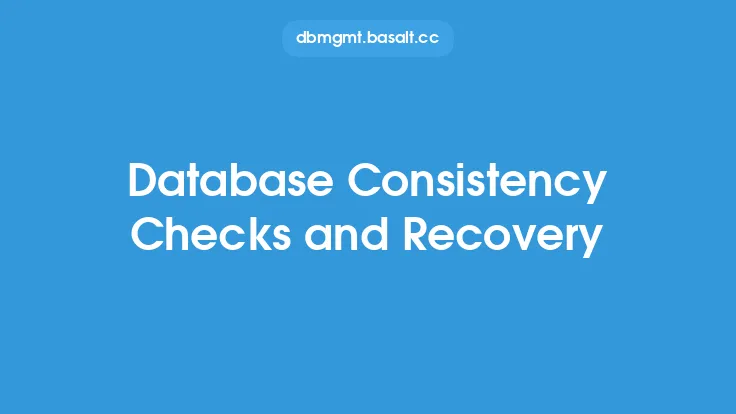Database recovery is a critical aspect of maintaining data integrity and availability in the event of a failure or data loss. One of the key components of database recovery is the use of transaction logs, which provide a record of all changes made to the database. In this article, we will delve into the world of transaction logs and explore their role in database recovery.
Introduction to Transaction Logs
Transaction logs are a type of journaling mechanism that records all changes made to a database, including insertions, updates, and deletions. These logs are typically stored in a separate file or location from the main database files and are used to track the sequence of events that have occurred within the database. Each log entry contains information about the transaction, including the type of operation, the data affected, and the timestamp of the event. By maintaining a record of all transactions, transaction logs provide a way to reconstruct the database to a previous state in the event of a failure or data loss.
How Transaction Logs Work
Transaction logs work by recording each transaction as it occurs, using a write-ahead logging (WAL) mechanism. When a transaction is initiated, the database engine writes a log entry to the transaction log file before making any changes to the database. This log entry contains the details of the transaction, including the data to be modified and the type of operation. Once the log entry has been written, the database engine then applies the changes to the database. If the transaction is successful, the log entry is marked as committed, indicating that the changes have been successfully applied. If the transaction fails or is rolled back, the log entry is marked as aborted, and the changes are reversed.
Types of Transaction Logs
There are several types of transaction logs, each with its own strengths and weaknesses. The most common types of transaction logs are:
- Physical transaction logs: These logs record the physical changes made to the database, including the actual data modified and the location of the data on disk.
- Logical transaction logs: These logs record the logical changes made to the database, including the type of operation and the data affected, but not the actual data modified.
- Combined transaction logs: These logs record both physical and logical changes made to the database, providing a complete record of all transactions.
Using Transaction Logs for Database Recovery
Transaction logs play a critical role in database recovery, providing a way to reconstruct the database to a previous state in the event of a failure or data loss. The process of using transaction logs for database recovery involves several steps:
- Identifying the point of failure: The first step in using transaction logs for database recovery is to identify the point of failure, which is the last known good state of the database.
- Recovering the database to the point of failure: Once the point of failure has been identified, the database can be recovered to that state using the transaction logs.
- Applying transactions from the point of failure: After the database has been recovered to the point of failure, any transactions that were in progress at the time of the failure can be reapplied from the transaction logs.
- Rolling back incomplete transactions: Any transactions that were not completed at the time of the failure can be rolled back using the transaction logs, ensuring that the database remains in a consistent state.
Benefits of Using Transaction Logs
Using transaction logs for database recovery provides several benefits, including:
- Improved data integrity: Transaction logs ensure that the database remains in a consistent state, even in the event of a failure or data loss.
- Faster recovery times: Transaction logs provide a way to quickly recover the database to a previous state, reducing downtime and improving availability.
- Reduced data loss: By providing a record of all transactions, transaction logs minimize the risk of data loss and ensure that all changes are properly recorded.
Best Practices for Managing Transaction Logs
To get the most out of transaction logs, it is essential to follow best practices for managing them. Some of these best practices include:
- Regularly backing up transaction logs: Transaction logs should be regularly backed up to ensure that they are available in the event of a failure or data loss.
- Monitoring transaction log space: The space used by transaction logs should be regularly monitored to ensure that they do not grow too large and impact database performance.
- Configuring transaction log settings: Transaction log settings, such as the log file size and the frequency of log backups, should be carefully configured to ensure that they meet the needs of the database.
Common Challenges and Limitations
While transaction logs are a powerful tool for database recovery, there are several common challenges and limitations to be aware of. Some of these challenges and limitations include:
- Log file size and management: Transaction logs can grow very large, requiring significant storage space and management.
- Performance impact: Writing to transaction logs can impact database performance, particularly if the logs are not properly configured.
- Log file corruption: Transaction logs can become corrupted, making it difficult or impossible to recover the database.
Conclusion
In conclusion, transaction logs are a critical component of database recovery, providing a record of all changes made to the database. By understanding how transaction logs work and how to use them for database recovery, database administrators can ensure that their databases remain available and intact, even in the event of a failure or data loss. By following best practices for managing transaction logs and being aware of common challenges and limitations, database administrators can get the most out of transaction logs and ensure the integrity and availability of their databases.





